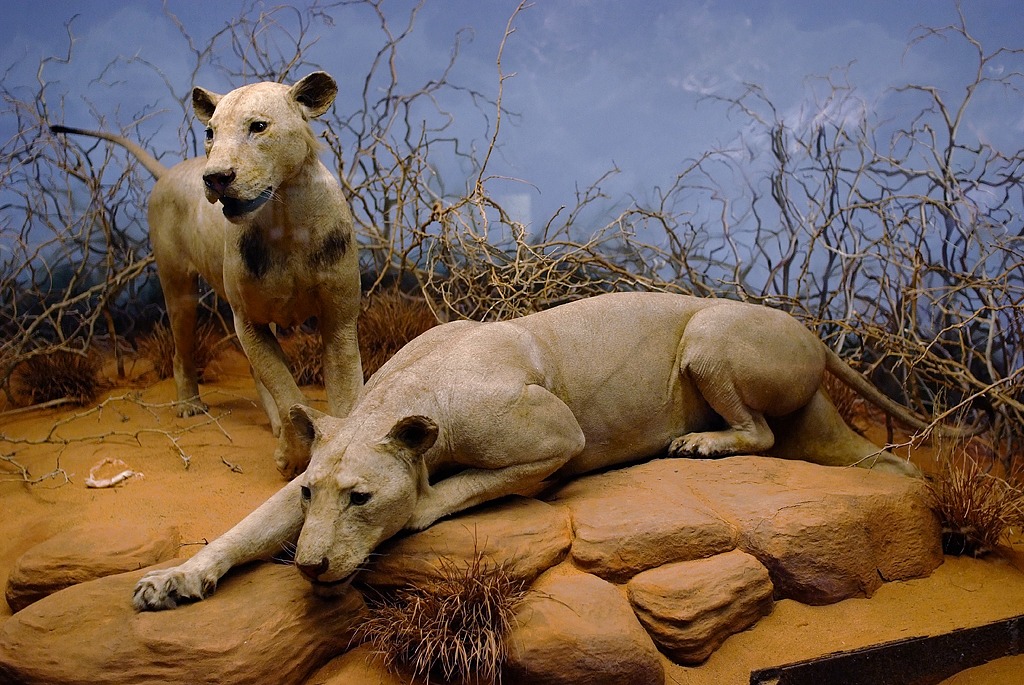The Man-Eaters of Tsavo

In 1898, during the construction of the Kenya-Uganda Railway, two man-eating lions terrorized railway workers at Tsavo, Kenya. These differed from other lions in that they had a peculiar taste for human prey, attacking camps at night and dragging victims away. Over 100 workers were killed, spreading fear and causing many workers to abandon work, which significantly slowed the construction of the railway. The conditions were so poor that work nearly came to a halt as no one felt safe.
To quell the crisis, engineer and expert marksman Lieutenant Colonel John Henry Patterson was sent to eliminate the lions. Despite setting traps and reinforcing workers’ camps, the lions continued their brutal attacks, remaining at large and exhibiting a chilling level of intelligence. Persuaded to handle things himself, Patterson did just that. After weeks of relentless tracking, he shot the first lion on December 9, 1898. The giant lion, measuring 9 feet long (2.7 meters), required several shots before it succumbed. But the second lion was much more cunning and more ferocious. It wasn’t until nearly three more weeks that Patterson eventually dispatched it on December 29, 1898, to the relief of the frightened laborers and allowing railway building to resume.
The mystery of why the Tsavo lions turned to human flesh has puzzled scientists and historians for centuries. Some theories argue that they were forced to attack humans due to lack of natural prey, while others believe that their exposure to human corpses along the slave trade routes sensitized them to consuming human beings. Another theory suggests that one of the lions suffered from a bad dental infection that made it difficult to hunt large animals and thus attack softer human targets.
When they died, Patterson kept the lion hides and skulls as mementos. Patterson eventually sold them to the Field Museum of Natural History in Chicago in 1924, where they were then stuffed and put on display. Tsavo National Park, which is now one of Kenya’s largest wildlife preserves, is a modern-day safari destination today. Visitors are able to go to the site of this ghastly event, while also observing the park’s famous red elephants, lions, and breathtaking scenery.
The Man-Eaters of Tsavo remain among the most infamous lion attacks in history, which have been the topics of books, documentaries, and the Hollywood film “The Ghost and the Darkness” (1996). If hunger, illness, or changes in climate were the causes, these lions lived on in popular imagination for their hellish ways of hunting. Their story serves as a harrowing reminder of the unfettered wrath of nature and of the challenges faced in building the railway that defined East Africa’s history.





